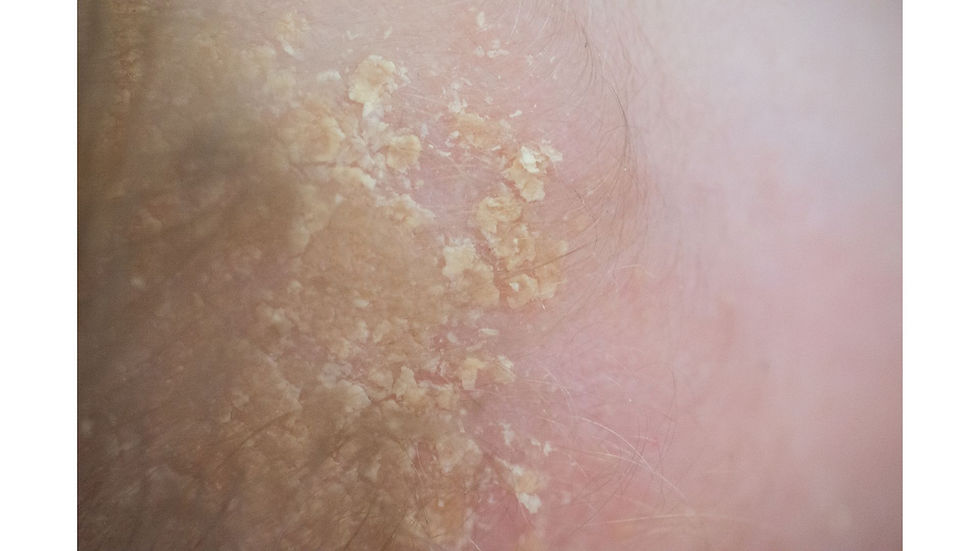How do I get rid of cradle cap in newborns
- Cradle Care Carer
- Feb 19, 2024
- 3 min read
Updated: Nov 11, 2024
Welcoming a new bub into your life brings a whirlwind of joy, cuddles, and, sometimes, a few health niggles that can have you scratching your head—quite like the one we're unpacking today: cradle cap. Known in the medical community as seborrhoeic dermatitis, this common condition is a form of eczema that affects many infants, leaving many a new parents wondering how best to care for their little one's scalp.

What is Newborn Cradle Cap?
Cradle cap is the common term for what doctors call infantile seborrhoeic dermatitis. It's a harmless skin condition often seen in babies, characterised by dry patches of yellowish scaly skin on the scalp. Cradle crap is a temporary condition and is not contagious. A more detailed explanation about how cradle cap can start, you can find here.
Symptoms and Signs
Your bub might have cradle cap if you notice:
Patchy scaling or thick crusts on the scalp
Oily or dry skin covered with flaky white or yellow scales
Skin flakes
Despite its appearance, cradle cap is usually not painful or itchy for infants. However, it's important to keep an eye on it to ensure it doesn't become more bothersome.

Cradle cap: no cause for alarm
One of the first things to remember about cradle cap is that it generally goes away on its own. You can choose to do nothing about it, it is perfectly fine. Most cases resolve by the time your baby is 12 months old. If you choose that you would like to do something about it, there are plenty of gentle care tips and remedies to help manage the condition.
When to see a doctor
While cradle cap is mostly harmless, there are times when it's wise to consult a healthcare professional. If you notice any of the following, it might be time to give your GP a ring:
The affected area looks red and inflamed.
There's a sign of infection (such as pus, significant redness, or swelling).
Your baby seems irritable or itchy.
The cradle cap spreads to other parts of the body.
Caring for cradle cap: Do's and don'ts
Understanding the best way to care for your bub's scalp can help manage cradle cap effectively. Here are some dos and don'ts:
Do not use soap: Soap can dry out your baby's skin, exacerbating the condition. Opt for using water only.
Oil and brush technique: After bath time, applying a small amount of baby-safe oil to your little one's scalp can help loosen the scales. Gently brush in circles with a soft baby brush to help lift the flakes.
On the website Pregnancy, birth and baby they recommend that you can get an over the counter shampoo at the Chemist but we have never worked with that at Cradle Care for more information click here.

Choosing the right oil
When selecting an oil for your baby's scalp, it's crucial to choose something safe and natural. Since anything applied to the skin can potentially be absorbed into the bloodstream, pick oils free from harmful chemicals and allergens. Avoid nut-based oils due to the risk of allergies. Some safe options include coconut oil or a simple, unscented (preferably cold pressed) baby oil designed for sensitive skin.
Prevention tips
Preventing cradle cap involves regular, gentle care of your baby's scalp:
Keep the scalp clean with water.
Use the oil and brush technique regularly to prevent scale buildup.
Ensure any product used is suitable for sensitive baby skin and free from irritants.
Cradle cap might be a common part of the infant journey, but it's usually nothing to worry about. With the right care, most bubs outgrow it without any fuss. Remember, every baby is different, and what works for one might not work for another. If you're ever in doubt, don't hesitate to reach out to your healthcare provider for advice.



Commentaires